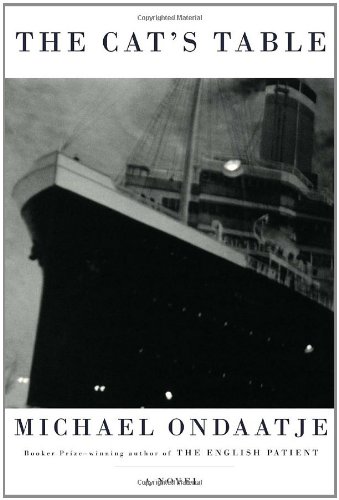
A mural of naked women astride gun barrels, painted deep inside the hull of an old ship…an incandescent garden, full of exotic plants with mysterious powers…a man in chains who walks only in the depths of the night…. These images would be intriguing to any of us, but for young boys on the brink of adolescence in the 1950s, they could be irresistible.
This is the story of Mynah, an 11-year-old boy traveling for 21 days from Ceylon to London on the cruise ship Oronsay. He and two of his young friends are assigned to dine at The Cat’s Table, the one located furthest from The Captain’s Table, where the least privileged passengers sat. They share the table with an assortment of colorful adults who become their companions: a pianist who has “hit the skids,” a ship dismantler who shows them passageways to move throughout the ship unnoticed, a woman who keeps pigeons in her pockets. Once the boys realize that they’re free to do what they want, they agree: every day, they’ll break one rule. They soon discover that the adults on the cruise aren’t always playing by the rules, either. They test their own limits, and they lose their innocence in sometimes humorous, sometimes poignant, and sometimes harrowing ways.
The Cat’s Table is the work of Michael Ondaatje, the best-selling author of The English Patient. Like that novel, this one is told in a non-linear fashion, with the memories of the 21-day cruise interwoven with the adult experiences of the narrator.
The Cat’s Table is not a page-turner. It reads slowly, often with chapters of only a few short pages, each a memory that the narrator recollects years later. The characters aren’t fully developed, nor are the story lines complete; there are no easy, satisfying resolutions in this work. Instead, we see life as the boy recalls it: all of the characters with disconnected pieces of their own stories, never to be completely revealed to him or to us. Instead, we learn how the experiences of those intense, heady, and confusing days shaped the man he became in the years afterward.
If you’re looking for a light beach read or a novel that offers closure and a happy ending, this isn’t it. You’ll come away with far more questions than answers. It can also be challenging to follow because it’s written more like a beautifully-crafted impressionist painting: colorful, bright in some places, muted and dark in others—because life and its memories are like that.


